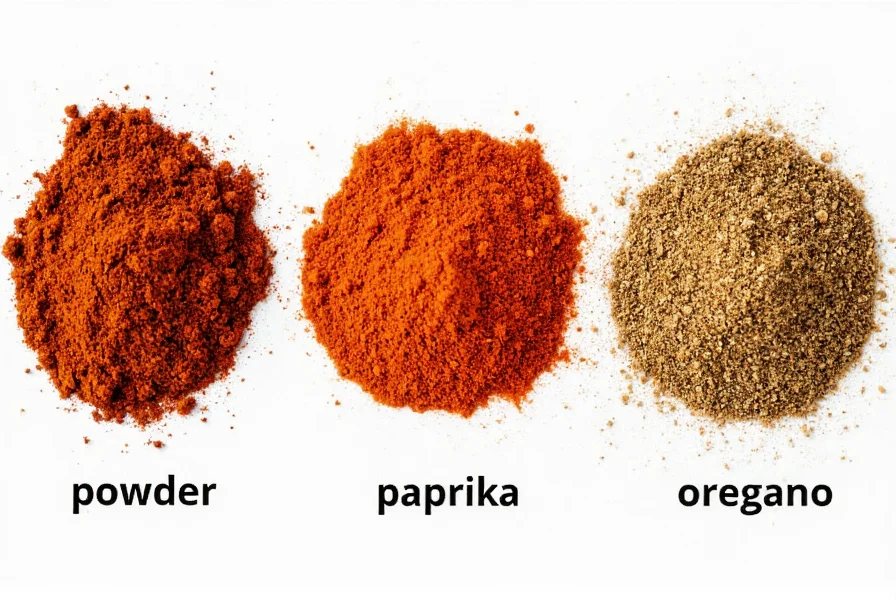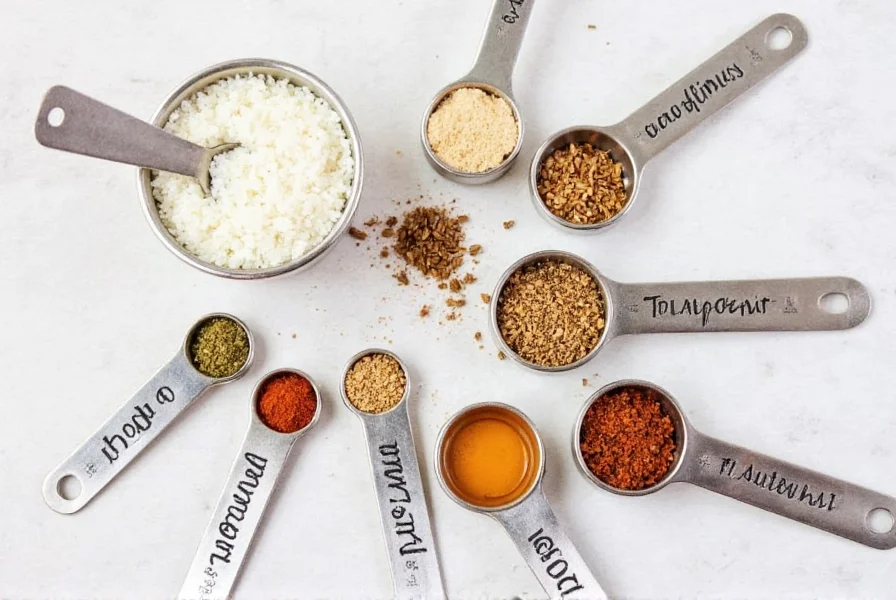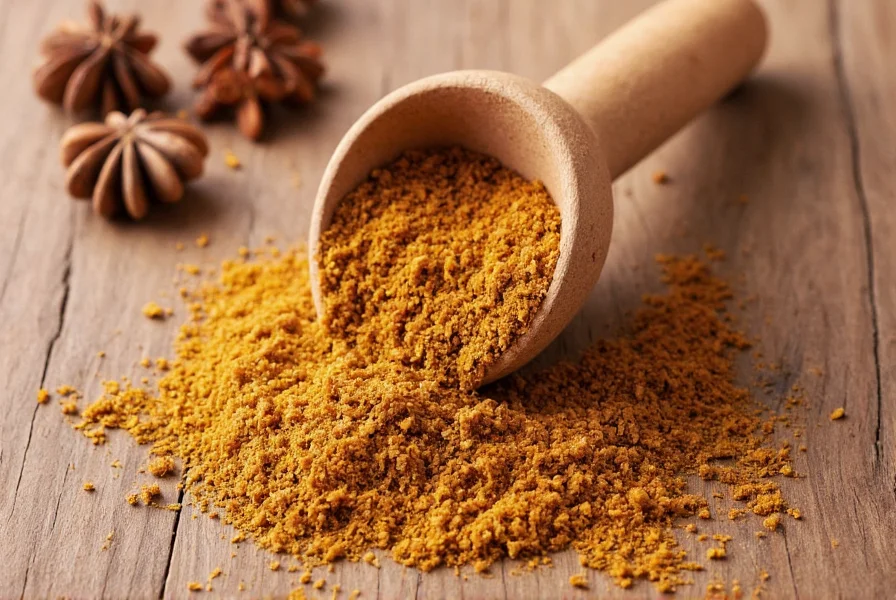Running out of cumin while cooking doesn't have to ruin your recipe. Understanding which spices can effectively replace cumin's distinctive earthy, warm flavor with citrus undertones requires knowing both what makes cumin unique and how different substitutes interact with other ingredients. This guide provides practical solutions based on extensive culinary testing across various cuisines.
Understanding Cumin's Unique Flavor Profile
Cumin brings a distinctive warm, earthy flavor with subtle citrus notes and a slight bitterness that's essential in many global cuisines. Its complex profile makes substitution challenging because no single spice perfectly replicates all aspects of cumin's taste. The key to successful substitution lies in matching the dominant flavor characteristics needed for your specific dish rather than seeking an exact replacement.
When selecting a cumin alternative, consider whether your recipe requires cumin primarily for its earthiness, warmth, or distinctive aroma. Different substitutes excel at providing different elements of cumin's flavor profile, which is why the best replacement varies by cuisine and specific recipe requirements.
Top Cumin Substitutes Ranked by Effectiveness
Based on extensive culinary testing across multiple cuisines, these substitutes provide the most authentic results when cumin isn't available:
| Substitute | Flavor Comparison | Best For | Substitution Ratio |
|---|---|---|---|
| Chili Powder | Less earthy, more tomato-based flavor | Mexican dishes, chili, tacos | 2:1 (2 parts chili powder to 1 part cumin) |
| Coriander | Milder, citrusy, less earthy | Indian curries, Middle Eastern dishes | 1:1 with slight lemon zest addition |
| Paprika + Oregano Blend | Earthy with herbal notes | General cooking, stews, soups | 1.5:1 blend (1 tsp paprika + ¼ tsp oregano) |
| Garam Masala | Complex, warm, less earthy | Indian recipes only | 1:1 with reduced other spices |
| Cumin Seeds (toasted) | Stronger, more intense flavor | All applications (if available) | 1:1.5 (1.5 tsp seeds = 1 tsp ground) |
Cuisine-Specific Cumin Substitution Guide
Mexican and Latin American Dishes
For authentic-tasting Mexican recipes when you need a cumin replacement for chili or tacos, chili powder provides the closest approximation. Most commercial chili powders already contain cumin along with garlic, oregano, and paprika, making them ideal substitutes. Use a 2:1 ratio of chili powder to cumin and reduce additional spices accordingly. For a more complex flavor profile, combine equal parts chili powder and smoked paprika.

Indian and Middle Eastern Recipes
When searching for a cumin substitute for Indian curry or Middle Eastern dishes, coriander offers the most authentic results. While milder than cumin, coriander shares similar citrus notes that work well in curry blends. Use a 1:1 substitution ratio and add a pinch of lemon zest to enhance the citrus elements. For more complex dishes, garam masala can replace cumin at a 1:1 ratio, but reduce other spices since garam masala contains multiple warming spices.
General Western Cooking Applications
For everyday cooking where cumin appears in soups, stews, or roasted vegetables, a custom blend works best. Combine 1 teaspoon paprika, ¼ teaspoon dried oregano, and ¼ teaspoon garlic powder for every teaspoon of cumin required. This blend captures cumin's earthiness while adding complementary herbal notes that enhance most Western dishes without overpowering them.
Advanced Substitution Techniques
Professional chefs use several techniques to maximize the effectiveness of cumin substitutes:
- Toasting dry spices - Lightly toasting substitute spices before use enhances their aromatic compounds, bringing them closer to cumin's intensity
- Layering flavors - Combining two or three substitute spices creates a more complex profile that better mimics cumin's multidimensional flavor
- Timing adjustments - Adding substitutes at different cooking stages affects flavor development; earthier substitutes work best added early, while citrusy notes should be added later
Common Cumin Substitution Mistakes to Avoid
Many home cooks make these critical errors when replacing cumin:
- Using curry powder as a 1:1 substitute (it contains turmeric which changes color and flavor profile)
- Substituting cayenne pepper for heat without considering cumin's earthiness
- Using pre-mixed taco seasoning which often contains excessive salt
- Not adjusting other spices when introducing a substitute blend
Creating Your Own Cumin Substitute Blend
For the most versatile cumin alternative, create a custom spice blend you can keep stocked:
Basic Cumin Replacement Blend:
1 tablespoon smoked paprika
2 teaspoons dried oregano
2 teaspoons garlic powder
1 teaspoon coriander
½ teaspoon cayenne (optional for heat)
Mix thoroughly and store in an airtight container. Use 1½ teaspoons of this blend for every teaspoon of cumin required in recipes. This versatile blend works across multiple cuisines and provides consistent results when cumin isn't available.

When Substitution Isn't Recommended
Some dishes rely so heavily on cumin's distinctive flavor that substitutes significantly alter the final product. Traditional recipes like authentic chole (chickpea curry), certain Mexican mole sauces, and Yemeni hawaij spice blends should ideally be made with actual cumin. In these cases, consider making a special trip to obtain cumin rather than compromising the dish's authenticity.
Frequently Asked Questions
Can I use turmeric as a cumin substitute?
Turmeric makes a poor cumin substitute on its own as it provides color without cumin's earthy flavor. For limited applications, combine 1 part turmeric with 2 parts coriander and a pinch of paprika to create a more balanced alternative, but this works best only in curry dishes where color matters less.
What's the best cumin substitute for chili con carne?
Chili powder is the best substitute for cumin in chili recipes, using a 2:1 ratio (2 parts chili powder to 1 part cumin). For deeper flavor, combine equal parts chili powder and smoked paprika, which mimics both the earthiness and smokiness that cumin provides in traditional chili recipes.
How do I substitute cumin in hummus?
For hummus, use coriander at a 1:1 ratio as the closest substitute, adding a pinch of lemon zest to enhance the citrus notes. Alternatively, combine equal parts paprika and ground coriander for a more complex flavor that complements the tahini without overpowering the chickpeas.
Can I use caraway seeds instead of cumin?
Caraway seeds share some flavor compounds with cumin and can work as a substitute at a 1:1 ratio, but they have a stronger anise-like flavor. Toast the seeds lightly before grinding to mellow their intensity. This substitution works best in German or Eastern European dishes but may alter Middle Eastern or Mexican recipes significantly.
Does cumin have any health benefits I should consider when substituting?
Cumin contains antioxidants and may aid digestion, but most substitutes don't replicate these specific benefits. If health benefits are your primary concern, consider keeping a small stash of cumin specifically for medicinal purposes while using substitutes for flavor in cooking.











 浙公网安备
33010002000092号
浙公网安备
33010002000092号 浙B2-20120091-4
浙B2-20120091-4